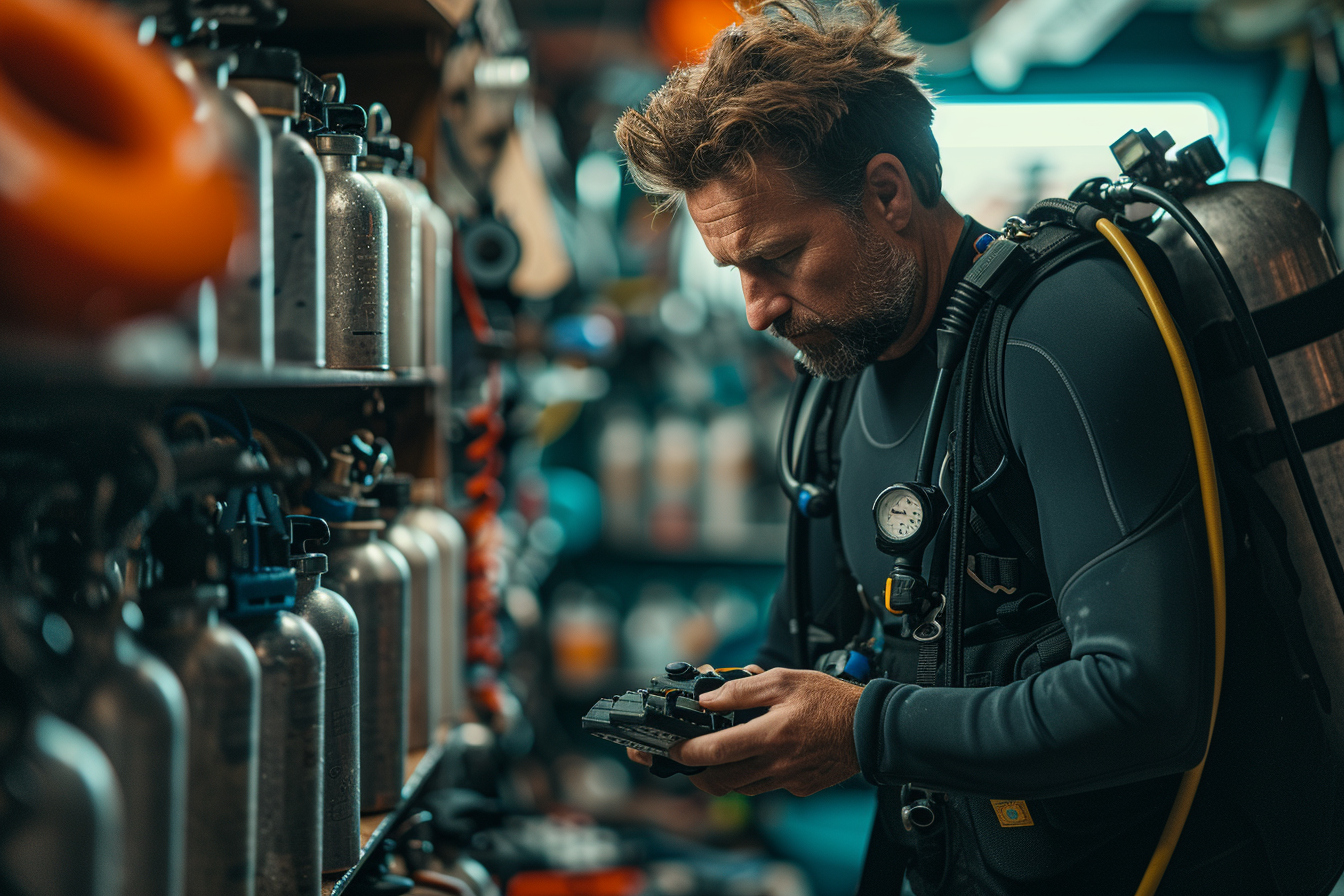Scuba diving opens up a fascinating world beneath the waves but having the right gear is paramount to a successful and enjoyable dive. The process of choosing scuba equipment can seem daunting with countless options and considerations. The following insights will guide you through the key aspects of selecting scuba gear that fits your needs, enhances safety, and maximizes comfort.
Understanding scuba gear components
Before diving into the specifics, it’s useful to understand the main components of scuba gear. These include the mask, snorkel, fins, wetsuit, buoyancy control device (BCD), regulator, dive computer, and weights. Each plays a vital role in your underwater experience.
Selecting the right mask
A scuba mask is more than a window to the underwater realm—it’s a personal piece of equipment that must conform to your face with a perfect seal. Analyzing face shape and features will lead to a mask with the right fit. A wide range of materials and designs exists, from single to double lens masks, and from traditional silicone skirts to the latest hypoallergenic compounds.
Tip: Perform the ‘face test’ without the strap to ensure a snug fit. The mask should stay put with a gentle inhale through the nose.
Choosing snorkels: a simple affair
While snorkels may seem less significant, they’re indispensable during surface swims or when waiting to descend. Comfort and ease of breathing are crucial. Look for features like a comfortable mouthpiece, efficient purge valve for easy clearing, and a flexible tube that does not cause drag.
Efficient kicking with the perfect fins
Fins translate your leg movements into smooth propulsion through water. Open-heel fins with adjustable straps offer versatility, while full-foot fins are more suitable for warm waters. Consider the fin’s stiffness, blade style (paddle or split), and ease of donning and doffing. Your style of diving—whether you favor leisurely exploration or strong currents—will significantly inform this choice.
Tip: With wetsuit boots on, fins should be snug but not too tight, ensuring efficient energy transfer during the kick cycle.
Wetsuit wisdom: the quest for comfort and warmth
Water temperature is key when choosing a wetsuit. Thickness ranges from 2mm for tropical waters to 7mm for cold environments. Suits come in full-length, shorty, or semi-dry styles, each with benefits depending on water conditions and personal preference. Neoprene is the standard material, but advanced options like compression-resistant foam improve warmth and longevity.
Tip: Seek a wetsuit that fits like a second skin without restricting movement or breathing.
Mastering buoyancy with the ideal bcd
A BCD not only holds your tank in place but also allows precise control over buoyancy. Between the jacket style, which wraps around the diver, and the wing style, which inflates behind, choices abound. Key features include lift capacity, integrated weights, and pre-dive adjustability for peerless control and security.
Tip: Carefully assess the BCD’s fit over your wetsuit. It should be comfortable without being too tight or too loose when fully inflated.
Breathing easy with high-quality regulators
The regulator, your lifeline underwater, deserves meticulous attention. Reliability in varying conditions, ease of breathing, and maintenance requirements should drive your selection. First and second stages vary, from balanced to unbalanced and piston to diaphragm types, each with its merits and price points.
Tip: High-performance models that offer effortless breathability at different depths and orientations are worth the investment for avid divers.
Dive computers: dive smarter, not harder
Advancements in dive computers have revolutionized decompression tracking and dive planning. Important aspects to consider include the display’s readability, user-friendly interface, nitrox capability, and whether it can be integrated with other instrumentation. A dive computer should align with your experience level and types of dives you anticipate doing.
Tip: A feature that often goes overlooked is ascend rate monitoring, a valuable tool in preventing decompression sickness.
Weight systems and distribution
Achieving optimal buoyancy often involves a delicate balance of weight. Distributing weight evenly across integrated BCD pockets or a weight belt can significantly enhance comfort and control. This customization should always be tested in a controlled environment before venturing deeper.
Mixing and Matching for Peak Performance
While brand loyalty may offer the convenience of companion pieces designed to work seamlessly together, mixing different brands can sometimes yield the best configuration for your needs. Thoroughly test gear configurations in a safe aquatic setting to ensure compatibility.
Prioritizing safety and durability
Quality equipment not only performs better but tends to last longer, proving to be a more cost-effective investment in the long run. Look beyond upfront costs and evaluate the durability, warranty, and serviceability of the gear. Safety features such as whistle-equipped snorkels, reflective writing on inflator hoses, and knife or cutting tool attachments for BCDs should not be overlooked.
Investing in the Future of Diving
Choosing scuba gear is not a one-off event but a continuous process. As your diving skills evolve, so too may your equipment needs. Consider gear that can grow with you, offering scalable complexity or upgradability.
Mastering the selection of the perfect scuba gear is an ongoing journey. Personal preference, the environment you’ll be diving in, and specific use cases all weigh heavily on these decisions. By focusing on fit, comfort, reliability, and safety features, you create a toolset that not only facilitates but enhances your underwater experience. Carefully researched choices contribute to countless safe and memorable adventures beneath the waves. Make each choice count – the underwater world awaits!
